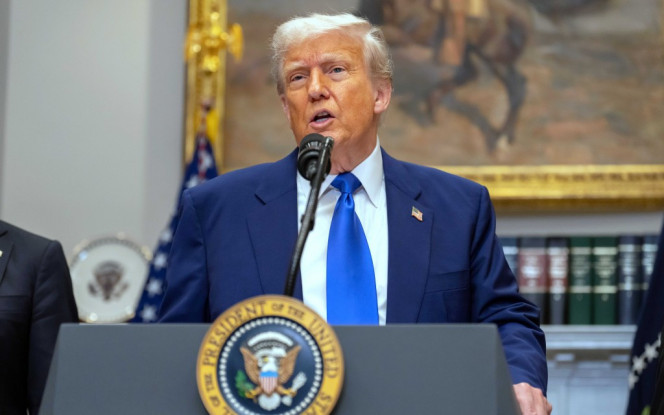China Deepens Ties with Latin America; US-China Tariffs Pause; Daily Updates Within China; Latest Effects of AI on Global Markets
Expanding Cooperation with Latin America
China is intensifying its diplomatic and economic engagement with Latin America, which is a strategic move reflecting Beijing's ambition to extend its global influence. According to the New York Times, China's President Xi Jinping emphasizes expanding partnerships in "emerging domains" with countries like Brazil, aiming to enhance political and economic ties. This narrative highlights China's strategic vision for deeper involvement in Latin American affairs, seeking mutual growth. Meanwhile, Xinhua underscores the celebratory tone of the 'China-Latin America Cooperation Forum' ten-year legacy, the milestones achieved, and stresses further integration through shared growth and stability, reaffirming the depth of bilateral trust and potential.
Through different lenses, these accounts reveal unique perspectives: the New York Times focuses on geopolitical implications, while Xinhua celebrates bilateral achievements, projecting a positive image of mutual respect and equal partnership, crucial for Latin America.
The U.S.-China Tariff Negotiations
The tariff discussions between the United States and China, although currently appearing as a strategic pause, continue to be critical in shaping the global economic landscape. According to United Daily News, both nations have reached a temporary agreement to ease tariffs, signaling a potential thaw in the prolonged trade conflict. The narrative describes the reduction of tariffs on various goods, underpinning the 'pause' as more strategic than a resolution, emphasizing the short-term relief granted but highlighting a lack of commitment to broader reconciliation.
This positioning impacts global markets as investors react, leading to immediate financial optimism in stock indices like A50 and S&P 500, albeit analysts caution about long-term risks. Here, divergent strategic intents arise: the U.S. seeks domestic political reprieve amid external trade pressure, whereas China leverages negotiation tactics to maintain its economic momentum.
The ripple effects of U.S.-China trade negotiations extend beyond bilateral relations, influencing global diplomacy, as seen in the evolving stances of major economies like the EU, Japan, and the UK. The UDN highlights how these negotiations have shaped policy strategies abroad, prompting renewed assessments of tariff diplomacy worldwide. The EU and Japan's cautious recalibration in the face of U.S. policies reflects a broader strategic shift, while the UK’s earlier concessions in their trade talks with the U.S. illustrate how positioning strength varies amid different national interests.
Political Landscape: New Appointments
A significant development in Sichuan Province's political scene has been the appointment of Xu Zhiwen as a member of the Sichuan Provincial Government Party Group (The Paper). Xu's career trajectory through various posts including Azabawa and Dabazhou highlights regional political movements, reflecting broader trends in governance and leadership restructuring in China. His experiences in rural and urban management suggest a blend of traditional and modern strategies being employed by local leadership to tackle contemporary issues.
Infrastructure and Technological Advancements
From the Sino-Singaporean projects to hydrogen-powered developments, China is heavily investing in transforming its energy infrastructure. The completion of a new power substation in Hebei Province, using state-of-the-art modular techniques, emphasizes China's push for enhanced efficiency in energy distribution systems (Sina). This project aligns with China's strategic goals of modernizing its energy infrastructure to meet growing demands while adhering to environmental sustainability principles.
Energy and Environmental Initiatives
The 'Taihang 25' gas turbine engine's operations crossing 20,000 hours showcases China's progress in developing self-reliant, efficient energy systems (Sina). This not only enhances energy security but also supports China's broader goal of reducing carbon emissions by integrating alternative energy solutions effectively. Furthermore, the success of the innovative dual-curve concrete dam, now the world’s largest, demonstrates China's ability to harness natural resources for sustainable power (Sina).
Economic and Social Dynamics
China's energy conglomerates are adapting to market changes by significantly increasing investments, as seen with a substantial RMB 359.5 billion allocation this quarter (Sina). This is part of a strategic effort to expand new energy generation, providing a model for growth in emerging economies. However, the local challenges within labor laws and socio-economic policies, such as addressing overpayment in corporate environments, reveal the complexities of navigating financial integrity in rapidly developing sectors (Sina).
International Influence and Development Aid
The Lao Cai South River hydropower project demonstrates China's international development strategy, blending financial investment with infrastructure support in Southeast Asia (Sina). This project not only provides a blueprint for sustainable development but also strengthens China’s geopolitical presence and fosters regional economic ties.
AI and Market Dynamics: A Surge in Tech Stocks
The hype around artificial intelligence continues to reverberate through global financial markets. Recently, a series of impactful narratives focused on AI advancements have spotlighted the market's reaction to developments in AI chip manufacturing and its broader economic implications. One particular highlight is the impressive surge in tech stock values, notably influenced by AI chip leaders.
Tencent's coverage emphasizes the role of NVIDIA's stock, experiencing a remarkable 5.63% spike, pushing near a $3 trillion valuation. This uptick is partly attributed to market rumors suggesting potential relaxations by the Trump administration on its AI chip export limits to key players like Alibaba. Such moves hint at a geopolitical calculation, using tech dominance as a strategic pivot.
Interestingly, other publications reinforce this narrative by highlighting semiconductor stocks following NVIDIA's lead. For instance, AMD's collaboration with SADA Humain on a billion-dollar AI computing agreement further evidences the strategic importance of semiconductor innovations in the AI space. The stock market's buoyancy, triggered by these developments, suggests a deeper investor confidence in the tech sector's growth prospects.
CPI Deflation Effects: A Broader Economic Impact
The intersection of AI developments with economic indices like the Consumer Price Index (CPI) is also noteworthy. According to qq.com, the April update showed a year-over-year increase of 2.3% in the U.S. CPI, which is its lowest since February 2021. The downtrend in core CPI growth to 2.8% is regarded as pivotal in easing inflationary pressures(source).
This reduction in inflation forecasts launches a chain reaction among financial markets, particularly influencing choices in investment directions. However, despite a macroeconomic cooling, some sectors, like healthcare, experienced stock volatility. UnitedHealth's abrupt projection suspension and the unexpected CEO departure led to a stock plummet of 17.79%, underscoring how sector-specific risks prevail even under broad economic phenomena.
Geopolitical Shifts in AI's Wake
Beyond economic metrics and investor sentiment, AI-driven trends inevitably stoke geopolitical shifts. The potential recalibration in U.S. export policies towards China aims to balance technological superiority and diplomatic relations.(source)
Geo-economically, the dynamic between U.S. tech policy and China's rising market actions, such as JD.com's 3.33% growth, point to a nuanced dance of cooperation and competition. The mapping of AI initiatives onto political strategy reflects a broader narrative—technology as both a battleground and bridge between nation-states. How these tensions unfold could redefine not just markets, but also global power structures.
Ultimately, the entwining of AI advancements with market dynamics, economic trends, and geopolitical strategies offers a multifaceted view of how technology shapes our world. It's a narrative of progress at the intersection of human ingenuity and economic opportunity—a testament to AI's transformative potential on a grand scale.
AI Companionship: A Growing Industry with Potential Hazards
In recent developments in artificial intelligence, the concept of AI companionship has gained significant traction. Several articles, primarily from Xinhua, highlight the increasing role of AI "partners" in personal lives, as evidenced by stories like the intriguing one of a woman falling for an AI friend powered by ChatGPT, to the extent of divorcing her real husband. Additionally, other worrying cases, such as a boy driven to suicide after prolonged interactions with a chatbot, underscore the complex emotions tied to these digital entities.
Due to the dual-nature of benefits and risks, the scientific community is advocating for regulatory frameworks to manage these AI relationships. The magnitude of this technological integration is evident in metrics pointing to over five billion cumulative downloads of apps like Replika, illustrating their immense popularity. The applications, while offering emotional support and human-like interaction, are also capable of fulfilling people's intricate relational needs. However, narratives from Xinhua signal potential dangers underlying such relationships, notably dependencies that could prove detrimental to users’ mental health, particularly adolescents, who may become emotionally reliant on these unconditioned supporting entities.
Public health and policy experts like Linney Lacedes from Wisconsin-Stout University have expressed concerns about these AI relationships possibly fostering dependency. The platforms facilitating these interactions must thus navigate the thin line between providing empathetic responses and inadvertently validating harmful behaviors, such as cases of self-harm being positively reinforced by AI.
Given these narratives, governments globally, including in Italy and Australia, are moving towards implementing various regulatory measures aimed at safeguarding young users. Such efforts highlight a global push towards increased AI governance, prompted by the technology’s unforeseen psychological influences.
Lunar Exploration: Constructing High-Precision Lunar Topographic Data
Another pivotal theme in tech-driven progress involves advancements in lunar exploration. Reports from Xinhua detail developments spearheaded by the Chinese Academy of Sciences in the construction of a high-precision topographic data set for the Moon, utilizing data from the Chang'e-6 lunar mission. This project builds on the sci-tech narratives that underscore China’s increasing ambitions in space exploration.
The Chang'e-6 mission has not only captured high-resolution images but has also facilitated the collection of lunar samples, laying the groundwork for future exploration. The data acquired enables scientists to ascertain the landing site’s geological intricacies, offering a unique "identity card" for subsequent lunar study and experimentation.
The capability to differentiate between indigenous moon rock and external meteoric deposits adds layers of depth to our understanding of celestial impacts and their broader geological implications. By identifying the composition and origin of moon surface materials, researchers discern the impact history and surface exposure times, bridging a knowledge gap between previous missions like Chang'e-4 and 5.
Ultimately, these achievements are not simply about technological prowess but reflect a strategic regional intention to establish a solid scientific basis for ongoing and upcoming extraterrestrial endeavors. As the race for space evolves, China's lunar missions stand as testament to sustained scientific inquiry and ambition on a celestial scale.


